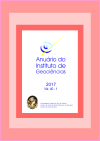Investigating the Significance of Physical and Functional Factors in the Vitality of Urban Squares (The Case of Sabzemeydan Square, Rasht)
DOI:
https://doi.org/10.11137/2017_2_199_209Keywords:
Vitality, Mixed Use, Context, Rasht, SabzemeydanAbstract
Climate, culture, and behavioral patterns has shaped the identity of cities. Culture and climate are two main factors that differentiate cities from each other. Finding significant cultural and behavioral patterns and interests of people is a prerequisite of understanding, introducing, and saving the identity of cities in order to save urban spaces. The current research by investigating the vitality reasons of Sabzemeydan Square in Rasht takes a step in this regard. The research method is a survey research and a comparison of two functional and physical aspects in the creation of vitality in this square. In the quantitative method 200 questionnaires were analyzed using SPSS and at the end the features and buildings were ranked using ANP technique. The results demonstrate that the presence of people in Sabzemeydan Square as one of the crowded areas of Rasht, mainly depends on the functional factors, which are the most effective ones in creating the sense of place.Downloads
References
Davies, M. & Jokiniemi, E. 2008. Dictionary of architecture and building
construction. Oxford, Architectural Press, 53p.
Carmona, M.; Tiesdell, S.; Heath, T. & Oc, T. 2010. Public places, urban
spaces. Oxford, Architectural Press, 226p.
Gehl, J. 2011. Life between buildings: Using public space. Washington,
Island Press, 24p.
Jacobs, J. 1961. The death and life of great American cities. New York,
Random House, 42p.
Jackson, J.B. 1985. Vernacular space. Texas Architect, 35(2): 237-247.
Karimnia, E. 2012. In search of sociable squares from a human and
peacemaking perspective. M.A. Thesis in Sustainable urban
planning and design, Stockholm, KTH, Royal institute of technology,
Department of urban planning and environment, Division
of urban and regional studies, 18p.
Lynch, K. 1981. A theory of good city form. Cambridge, MIT Press, 455p.
Montgomery, J. 1998. Making a city: urbanity, vitality and urban design.
Journal of Urban Design, 3(1): 93-116.
Ministry of Housing and Urban Development (MHUD). 1972. Master
plan of Rasht, Tehran, Urban planning and architectural unit
of MHUD.
Pakzad, J. 2008. Urban space, definition and process. Ministry of housing
and urban planning. Department of urban planning and architecture,
p.
Pakzad, J. 2004. Square and urban space, a definitional survey in urban
planning. Magazine of Municipalities (Shahrdariha), 67: 8-16.
Pakzad, J. 2012. Guide for urban space design in Iran. Ministry of housing
and urban planning. Department of urban planning and architecture,
p.
Paumier, C. 2007. Creating a vibrant city center. Washington, Urban
Land Institute, 91p.
Rezvani, M.S. & Rezvani, H.S. 2009. The education of urban managers
in Iran since 1950 to 2004. Journal of faculty of educational
sciences, 42(1): 457-472.
Safardoost, A. 2005. In search of urban identity of Rasht. Tehran, Organization
of urban construction and improvement, 28p.
Shifu, W. 2007. Seeking a path to livable city under multi-value coordination
[J]. Planners, 3: 6-18.
Soltanzadeh, H. 2006. Urban spaces in the historical context of Iran.
Tehran, The office of cultural research, 75p.
Tavassoli, M. 1997. Principles and methods of urban design in Iran. Tehran,
Research center of urban planning and architecture, 47p.
Thompson, C.W. 2002. Urban open space in the 21st century. Landscape
and urban planning, 60(2): 59-72.
Zucker, P. 1970. Town and square: from the Agora to the Village Green.
Cambridge, MIT Press, 287p.
Downloads
Published
How to Cite
Issue
Section
License
This journal is licensed under a Creative Commons — Attribution 4.0 International — CC BY 4.0, which permits use, distribution and reproduction in any medium, provided the original work is properly cited.















